Gundog trainer Ryan Kay tells the story of his young cocker spaniel’s survival against the odds, after she was hit by a car at a shoot - a cautionary tale that gundog owners can learn from
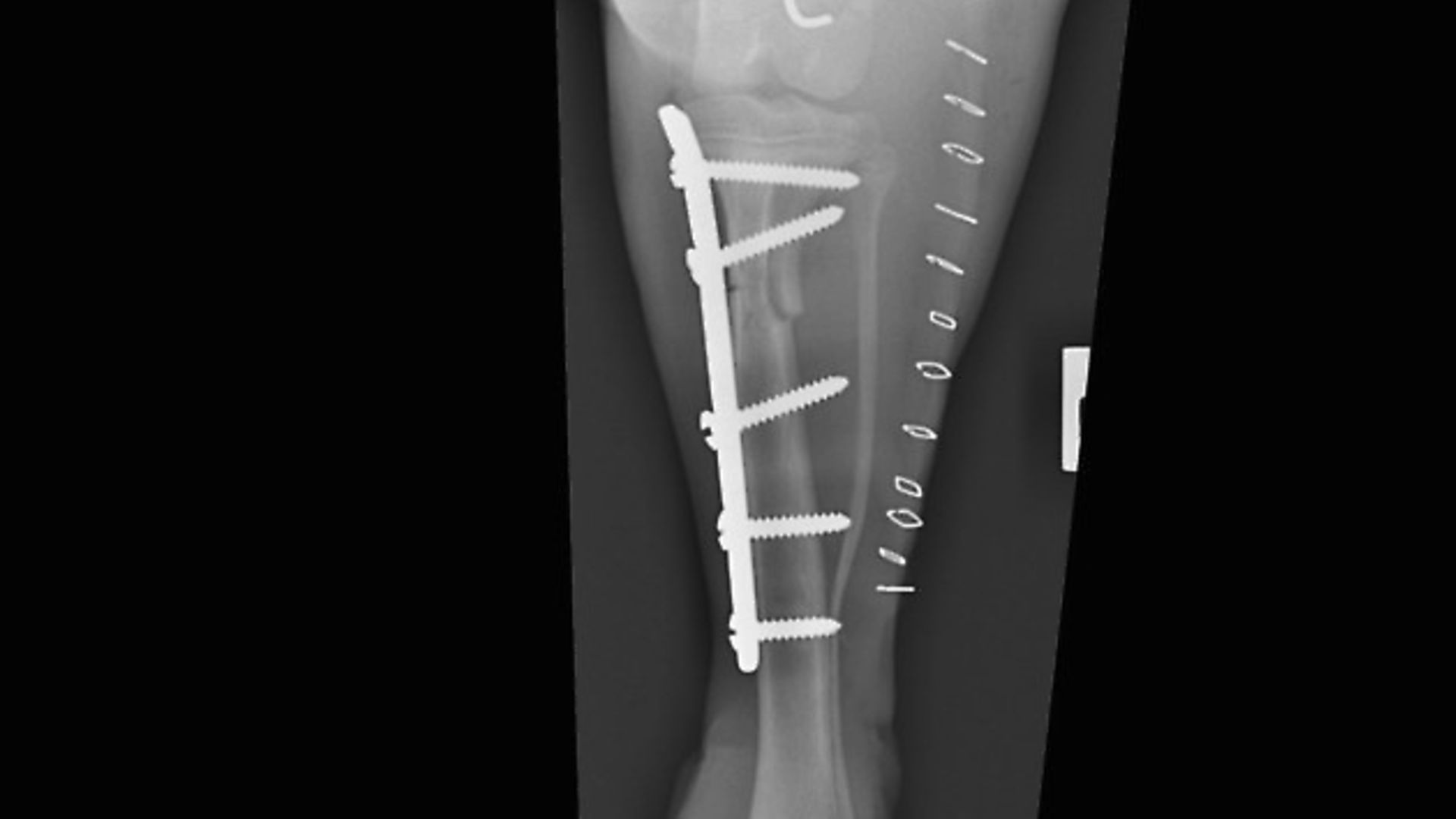 credit: Archant
credit: Archant
I can hear my wife, Alison, talking to our young cocker Skye as she walks downstairs to the kitchen. Skye makes a few little noises, and there’s the usual ‘ching ching’ as her tail wags against the side of her pen in excitement. We are very lucky to still have Skye, following an incident that happened towards the end of the last season. I thought long and hard about whether to share the experience here, but decided that if I did then perhaps I could help others to learn from my mistake.
We all hear of stories about accidents on shoots with dogs, but in all the years I’ve been part of various shoots, neither I, nor anyone else I know, has ever been part of one of those misfortunes. That is, until last January, when the dog in the story was actually mine.
Skye was just six and a half months old at the time, and with just a fortnight left of the shooting season she was receiving some measured exposure to the shooting world on our favourite shoot in Nidderdale, near Harrogate.
It was mid morning, and drinks time. Over the last few weeks I’d been letting Skye out of the car at this time so she could socialise with one or two of the other dogs milling about. It’s hard to describe the drinks meeting place, but if you knew the area you’d probably be as relaxed as I was when it comes to local traffic. This quiet area, however, does back onto another lane, bordered on either side by mature, dense rhododendrons. Skye was loose next to me while I chatted to her breeder about her progress. This chat then became a conversation with other folk in the shooting party, and it was at this point that I should have popped Skye back in the car. Deep in shooting talk, I’d dropped my guard a little; Skye was my responsibility and although other members of my family were there to keep a general eye out for her safety, we have a little rule regarding dog duty: if you’re the one that lets it off the lead, it’s your responsibility.
What happened next is still difficult for me to recount. My subconscious heard a screech and a bang, but it didn’t really register in my mind. It was the shouts from my daughter, Lily, from behind the rhododendrons that brought everything together… but there was also a scream – quite simply the sound of a young dog in pain. I ran. I knew there was a dog involved but it still hadn’t registered that it was Skye. Skye wouldn’t leave the area! I thought. But when I got to the lane, there lay Skye, looking up, still yelping. She was unable to move far. The lady of the car looked at me in obvious distress, shouting, “She just ran out.” My thoughts were to try to control the situation. “It’s not your fault,” I shouted to the driver as I looked over Skye. I carefully gathered her up in my arms, casting my eyes over her body, my brain trying to make sense of the damage I could see to her legs. I could see exposed bone. I could see flesh. But amongst the black hair it was hard to make out what belonged where. As I carried her to the car, advice and help came from all directions. “Take her to our vets off Skipton Road,” said Skye’s breeder. “I’ll ring them now and tell them you’re coming.” There was panic. The yelping had stopped and Skye went still. Alison carefully took her from me as I jumped behind the wheel.
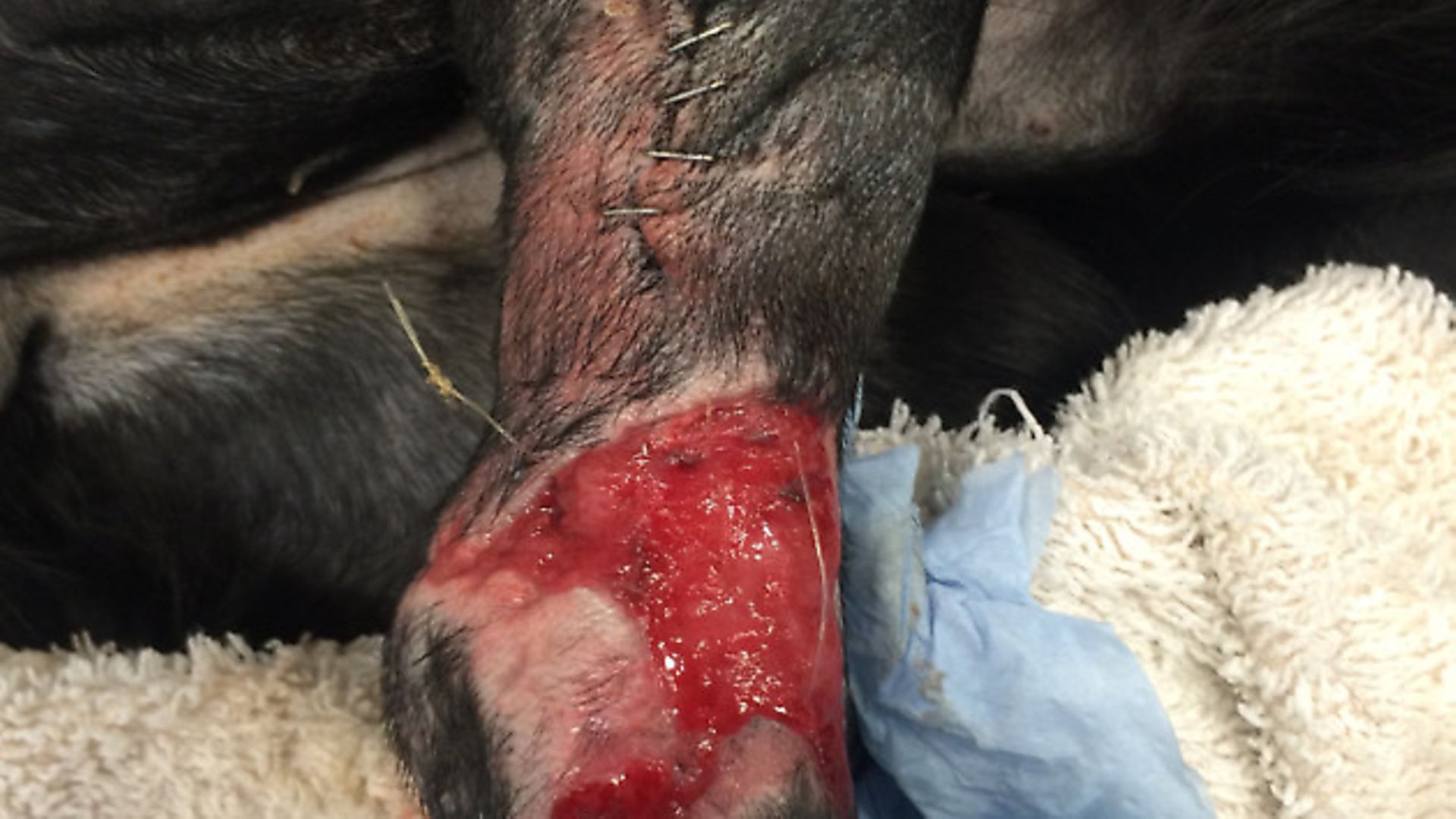 credit: Archant
credit: Archant
I don’t mind saying just how much I swore and blamed myself during the frantic journey to the Vet Hospital, but I’m sure my panic didn’t help Skye in any way. She was drifting… her head slowly falling and her eyes rolling. Alison recognised the signs of shock setting in and wrapped Skye in a warm coat.
Arriving at the Vet Hospital, I was relieved to find that they were ready for us, and the consultation room door opened for Alison to rush in with Skye. I couldn’t see into Alison’s arms as she went past. Was Skye conscious? Was she even alive? I could hear Alison impressing upon them that Skye was in shock and she stayed with her until she had been hooked up to a drip, before returning to me in the waiting room.
We sat, we waited and we comforted each other. The vet Christina came to talk with us. I instantly wanted to know everything… all the things that were impossible to answer right now. Will she be okay? What about her internal damage? What about her legs? If she lived, would she be able to work in the future? The next few hours were obviously the most crucial, and the blood samples would help to show the extent of any internal damage. After what felt like an eternity, the blood results came back; there were one or two areas to check again later, but thankfully they showed no sign of internal damage. Skye’s right hind leg had been preliminarily stitched up. She was heavily sedated of course, and at that point all we could do was wait and see how, or even if, she would get through the night.
She made it through and began to stabilise. The areas of her hind leg that needed stitching were of such an expanse and difficulty that it took three hours to complete. And all of these stitches would pop open again as the wounded parts began to swell.
The vet on duty over the weekend consulted with the senior partner, Bob Partridge, who reviewed the X-rays and then explained the extent of her injuries and laid out our options. Bob explained that he’d never seen an injury like it and that he would certainly find it a challenge to sort out. Her right back leg was broken in two places, the main concern being the break to her knee. In addition, she had three broken bones in her foot on the same leg, and further stitching was needed to her right front leg too. Not to mention other bad scrapes and cuts around her body. She did, however, have youth on her side and she had just about finished growing.
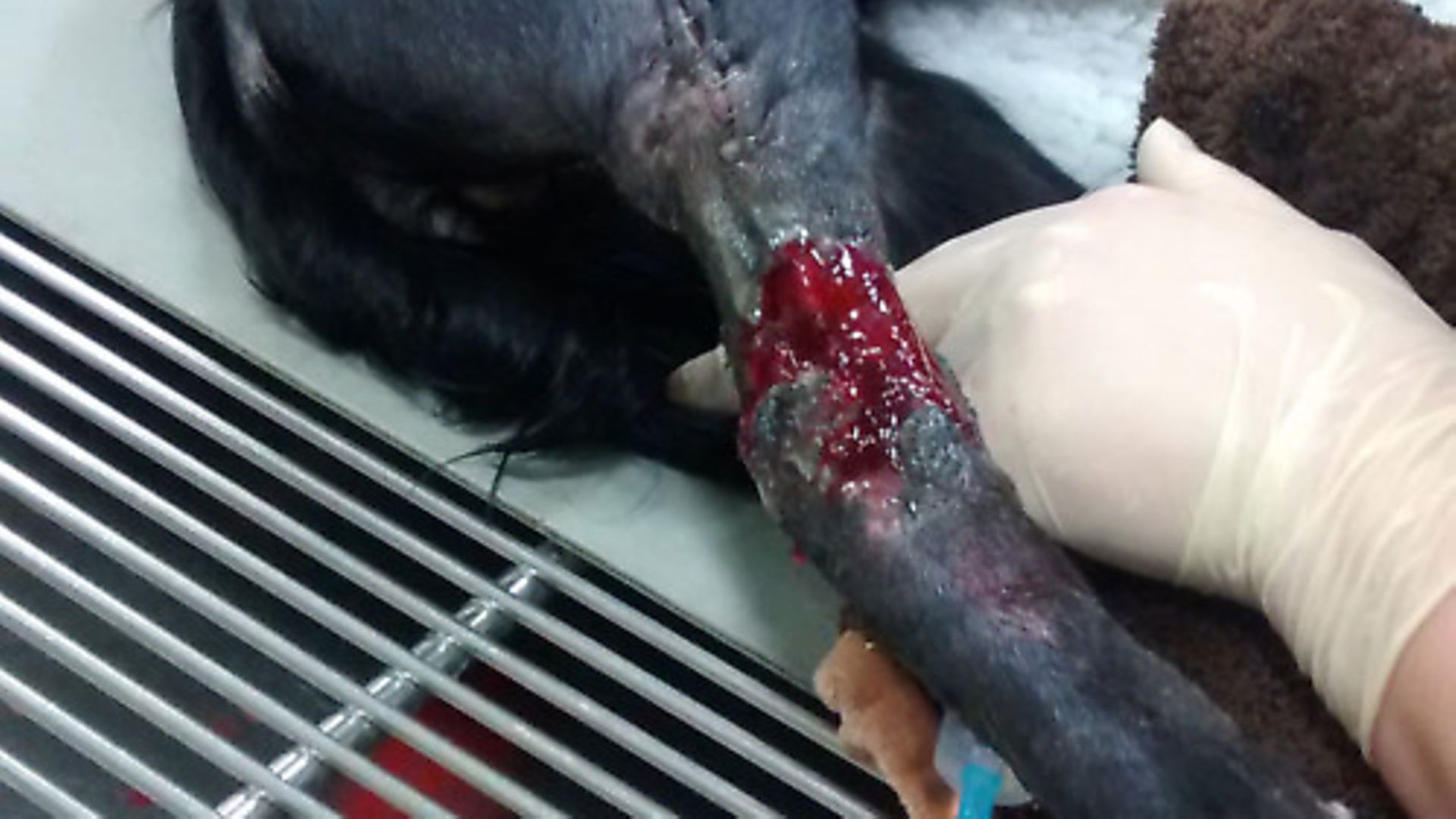 credit: Archant
credit: Archant
Bob explained that our first option was amputation. That one went out the window straight away; Alison and I would rather have had her put to sleep than to see a cocker trying to run on three legs.
The next was for her to be referred to the specialist orthopaedic surgeon, with the added difficulty of transferring her to wherever that was.
The third was for Bob to operate himself. Neither of these two options would guarantee results, so we went with Bob. He impressed upon us that he was a general veterinary surgeon rather than a specialist, however we were aware that he had a wealth of experience to draw upon, and being a veterinary hospital the facilities on offer were first class.
The operation took place almost 48 hours after the accident. It initially seemed almost unthinkable to us that there could be any delay in fixing broken bones, however it was explained that the primary concern was to stabilise Skye sufficiently to cope with anaesthesia during what was likely to be a lengthy procedure. The hind leg would be held together with two metal pins inserted through the knee and into her femur, and a four-inch metal plate screwed to her tibia. The operation seemed to last forever, as we fearfully awaited the phone call to deliver the initial outcome. When this came we were cautiously advised that it had gone as well as could be hoped, however this was only the first step, there were many variables, and we needed to wait and see how things progressed. It’s fair to say that I did pester Bob for some more reassurance and some precise answers over the next few weeks as Skye very slowly recovered from her main operation. But Bob has the experience to know when not to promise that everything will be okay.
Skye spent the next few weeks under the care of Bob’s team. Here, she was monitored closely, she had access to the analgesia she required and could have her dressings changed as frequently as was necessary. Being a veterinary hospital, there were dedicated staff on site 24/7 and the care from the veterinary nurses was unsurpassed. Once Skye was weight-bearing and the dressings only needed to be changed every few days she was allowed to return home.
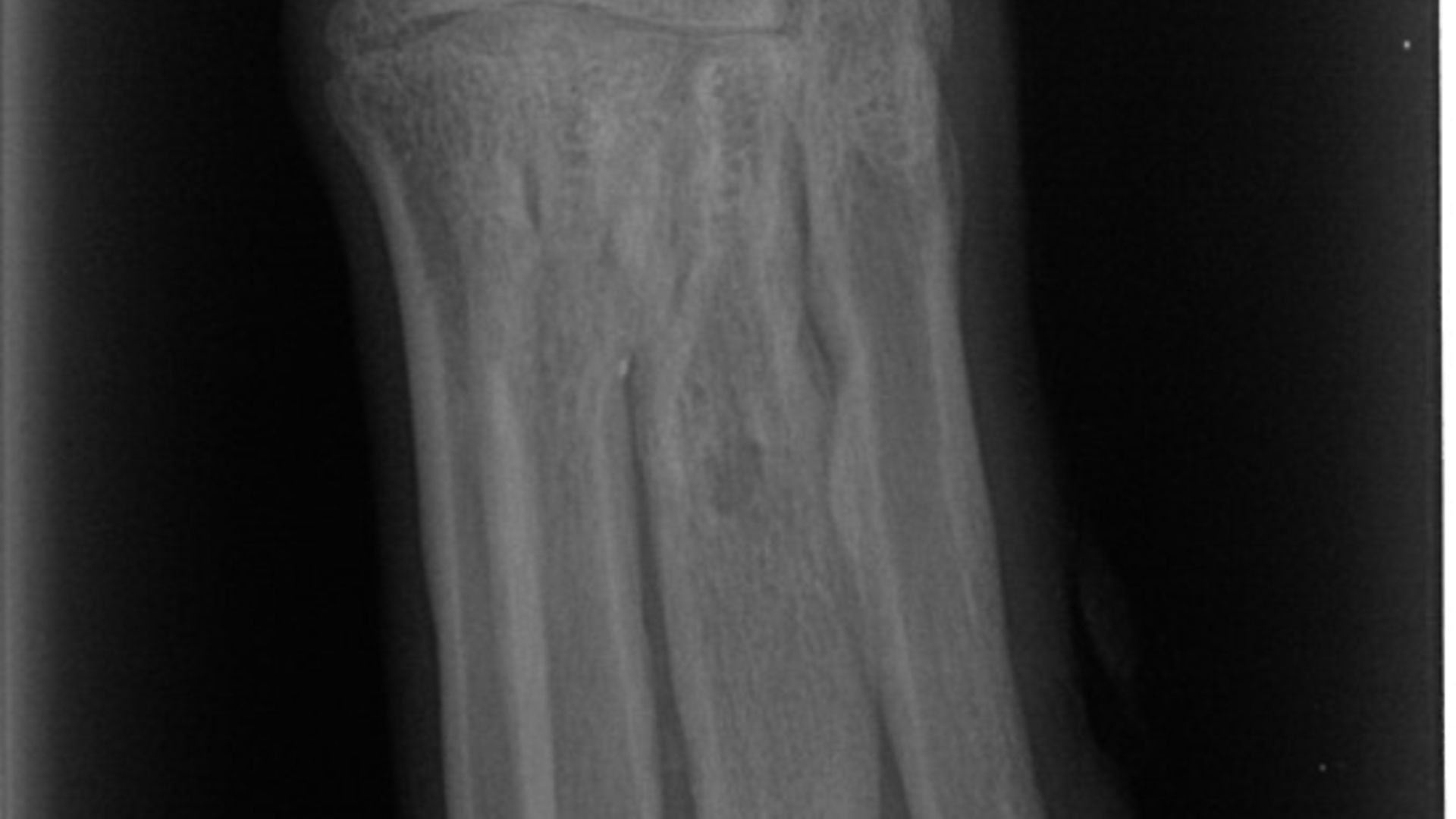 credit: Archant
credit: Archant
The next month would see us regularly visit Bob and his team with Skye for constant check-ups. It was a painstaking process trying to keep her mentally stimulated, and countless toys and chews were purchased to keep her busy. Her physical exercise had to be very cautiously and incrementally increased, starting from five minutes on a lead three times a day, and building very slowly in terms of time and distance allowed.
Another operation
As I eventually tried to bring her back to fitness, we could see that the metalwork used to keep everything in place was now becoming a hindrance to Skye and it would all need removing, so another operation was discussed with Bob. This was not a decision that was taken lightly; a further operation was not an appealing prospect after what she had already endured.
For a further four weeks it was back to very light lead work to ensure the wounds could heal and the bones could strengthen once more after the inevitable thinning due to them being reliant on the metalwork taking the strain. Furthermore, bone would also need to regenerate in the places where the screws had been removed, as a perfect screw thread was visible right through the bone.
 credit: Archant
credit: Archant
Rehabilitation
It was four months after the accident before she was ready to be brought back into light training, and swimming provided good supportive resistance training. I also let her pull on the lead as much as she wanted, as this would give good measured resistance too, as she would lean forward and push slowly off her back legs. But what would we be left with? If she didn’t now have a fear of vets it would be a miracle, as practically every time she was taken from her cage in the vets, she was given a jab of some sort. But thanks to a wonderful team of skilled and very caring veterinary professionals, Skye seems to be relatively mentally unscarred; she is blessed with a wonderful temperament.
An old gundog expert once said that virtually everything you teach a dog under six months you will have to teach again, as it will all be forgotten. Nonsense! Skye is the living proof. I’d taken her quite far in her first six months and when I eventually got the chance to test it all out again, everything was still there and completely on the button. Her gait is now slightly different and she walks with her right hind toe pointing out, but I really cannot believe that I still have a dog that can be worked. So much so, that she was soon ready to trial; and at just 13 months old, in August she collected her first award of fourth place in an AV Novice Trial on rabbits.
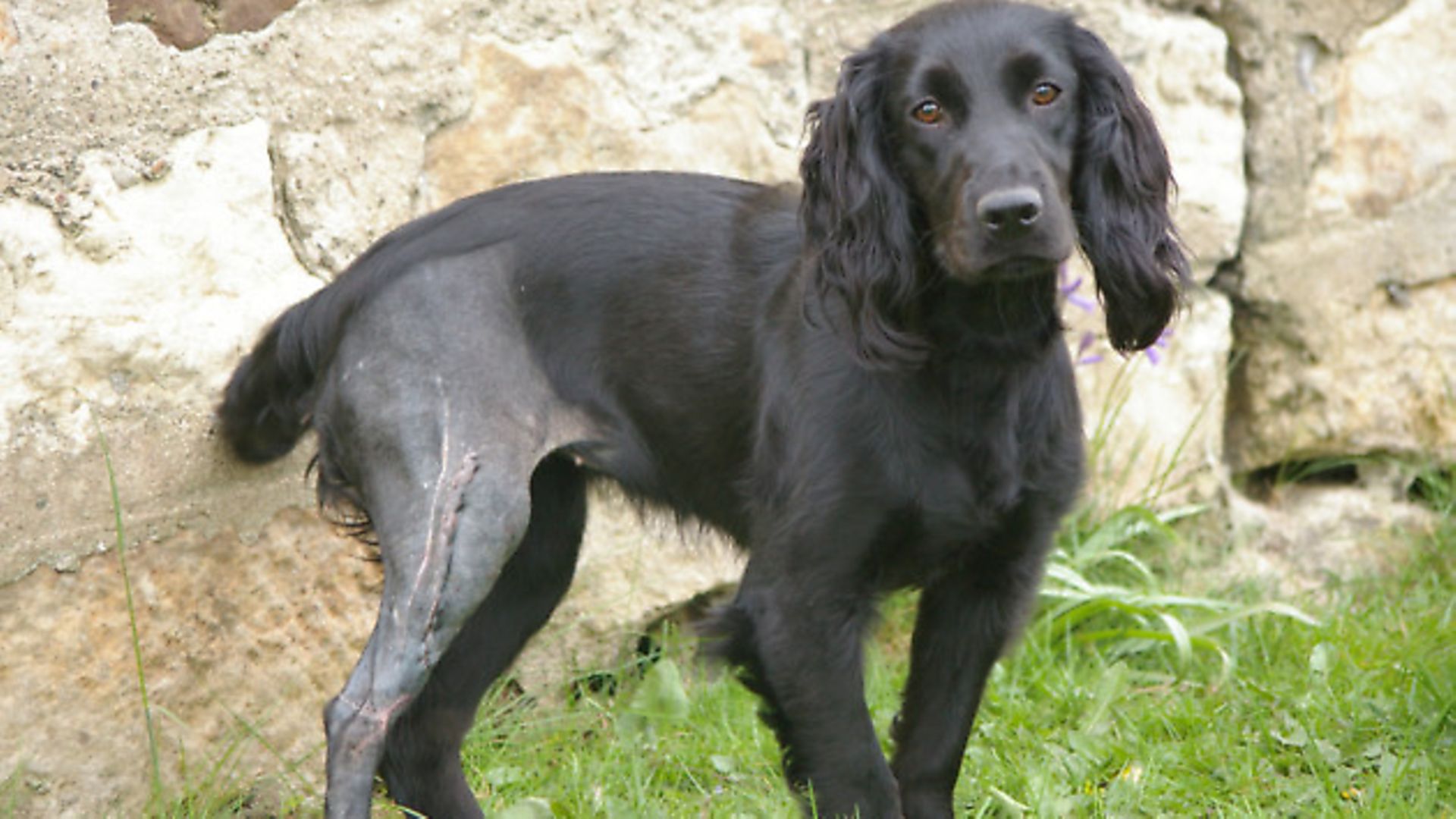 credit: Archant
credit: Archant
Oh, what was the cost of it all, you say? Well, yes, she was insured, but we’d recently switched policies to a new provider and the first 14 days of the new policy didn’t cover accidents. Had she been knocked down three days later, she’d have been covered! I’m philosophical about it, though, as I still have a special dog to work, that’s now earned her place in the house instead of the kennel. How much? Well, as my father-in-law used to say, money and fair words.
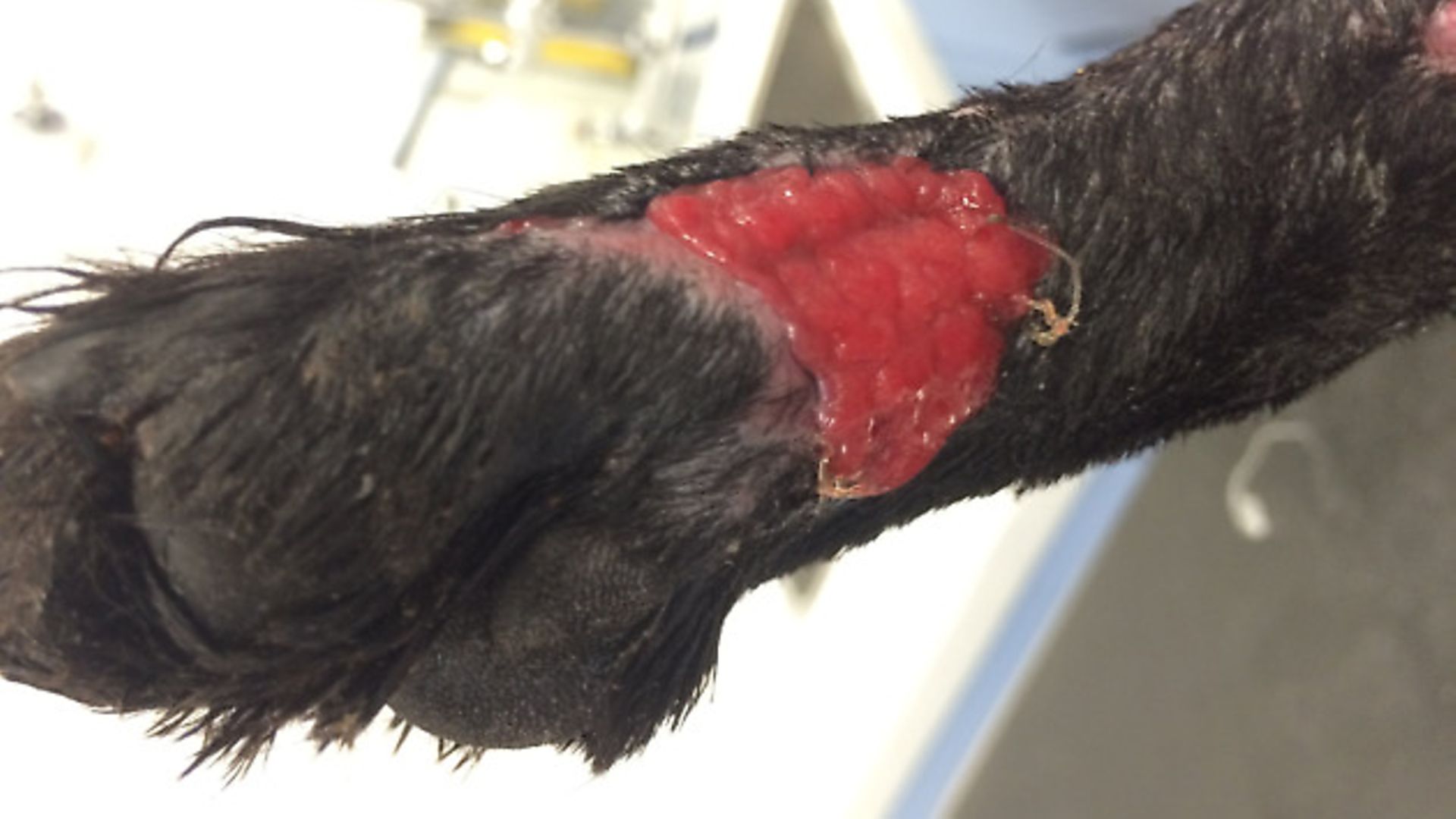 credit: Archant
credit: Archant
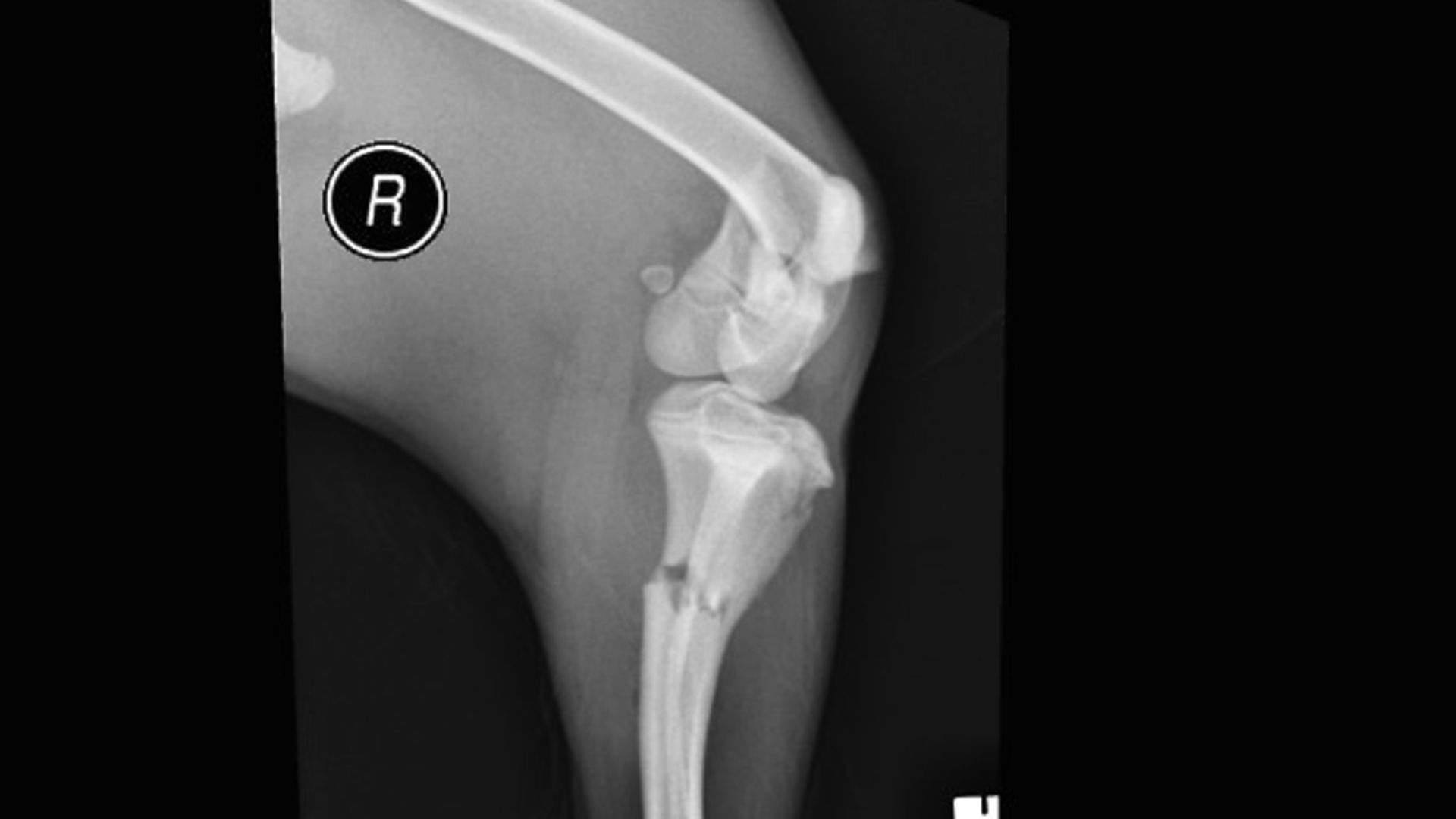 credit: Archant
credit: Archant
 credit: Archant
credit: Archant
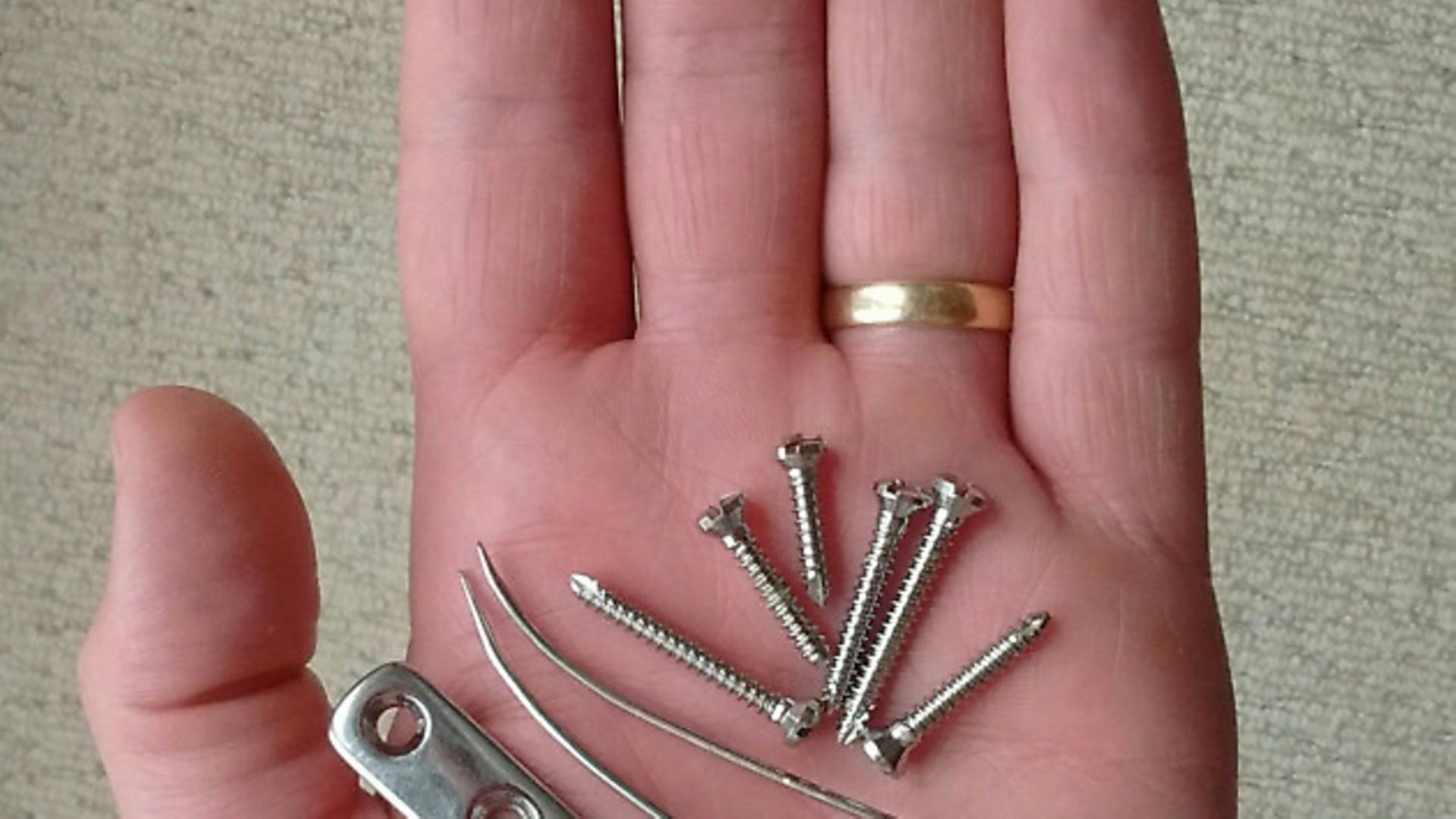 credit: Archant
credit: Archant
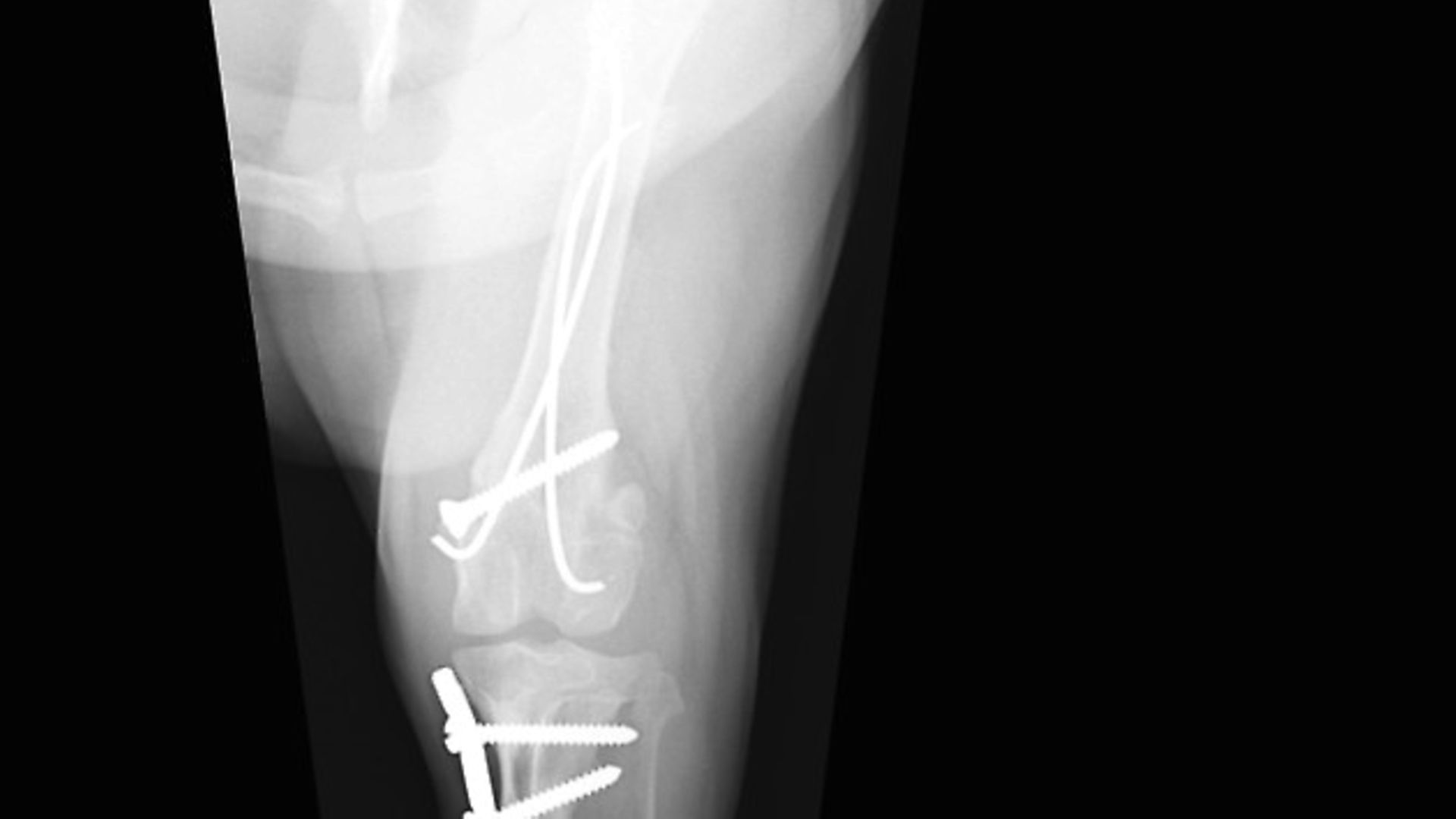 credit: Archant
credit: Archant
 credit: Archant
credit: Archant
 credit: Archant
credit: Archant